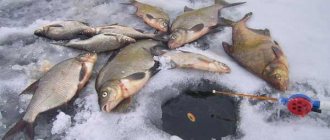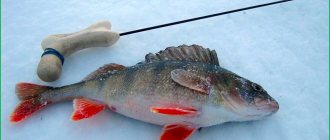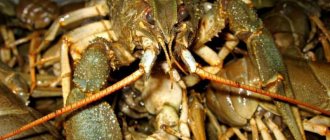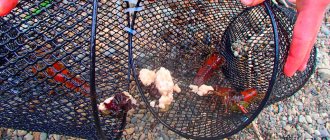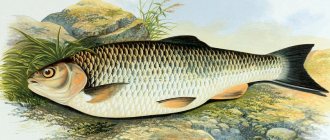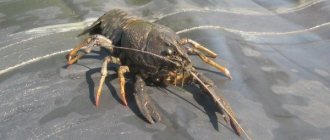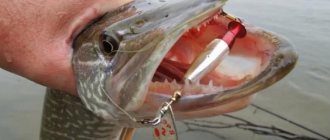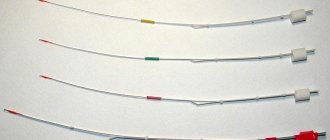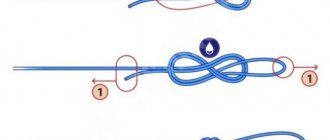Description and behavior characteristics
Ide belongs to the carp family. It is particularly undemanding to either the chemical composition of water or temperature fluctuations. Its scales are small, have a metallic sheen with a golden tint, the body is slightly elongated, the head is convex and small, all fins are reddish in color and have a notched shape.
In young males the scales are painted in brighter colors, while in females they are duller. Sexual maturity occurs at 4–5 years, but much will depend on the characteristics of the reservoir and food supply. It spawns very early, when the water temperature rises to only 5–8.
Their average weight reaches 2 kg, but you can also find 8-kilogram ides. It can eat many things; it is practically omnivorous: plant foods, earthworms, mollusks, crustaceans, small fish, larvae of various insects, etc. It is a schooling fish and can travel considerable distances for wintering migrations and spawning.
It is almost impossible to find a parking lot and a shelter, because they are always different, each body of water must be studied separately. They never appear on the surface of the water. They prefer hard ground, deep holes, whirlpools, pits, whirlpools, and fast currents.
Likes to be on the border between calm water and fast current. Never goes to sandbanks, rifts, or open areas. Spends almost all of its time in shelters, leaving them only in search of food.
Its behavior is reminiscent of predators: catfish, pike, etc. If it lies on the bottom, neither a small fish swimming nearby nor an insect seductively falling into the water will be able to lure it out.
Fishing calendar by fishing season
Spring
After the ice melts, the famous pre-spawning feast begins. Therefore, you can fish with various baits. In spring it always stays in flocks.
In April, it emigrates from large rivers to tributaries and spawning channels. After spawning, it returns back to its permanent place of residence. If the water level is high and does not go down for a long time, then the catches will be excellent.
Summer
The time is unstable, the fish are cautious. You can hunt only at dawn, or at night. At the end of June, it goes to deep-water and overgrown areas and can only be caught from there by chance. Small fish can still live near steep banks at depth.
A more desirable trophy may also appear there, which often swims up from the depths to hunt for small things. When the mass emergence of beetles begins, ide butterflies can be caught close to the surface.
Autumn
In autumn, the bite improves noticeably, especially from a boat. If you find a cluster, do not throw the bait immediately into the center, but only closer to the edge. They fish from the shore in places where frogs and fry gather.
He loves quiet backwaters with leaves falling into the water. Takes well: vibrating tail, spinner, twister, imitating a frog, small fish. In sunny weather it can be found at the mouths of rivers, streams, shallows, etc.
They leave for winter early, late October - November. Two weeks before this, he begins to actively eat everything he comes across in order to store fat reserves. At the beginning of freeze-up, the bite almost stops.
Winter
It spends most of the winter moving around in search of food and oxygenated water. They catch him with a jig and a jig. The best bite can be on the first ice. If the water is fully saturated with oxygen, the bite can continue all winter, but with varying success.
Where to look for ide in September
The active ide bite in September is observed at sunset, at night and early in the morning. As the water temperature in reservoirs decreases, flocks of roaches (ide up to 800 grams) gradually increase. Large individuals hunt in small groups and behave like real predators, eating small fish and frogs.
Signs of promising places for catching ide in September:
• Hard bottom with a slight coating of silt and the presence of bottom obstacles;
• Boundaries of fast and slow flow. This fish avoids fast channel currents and rapids in river branches;
• Depressions near steep banks;
• Areas with coastal trees and bushes hanging over the water;
• Mouths of tributaries;
• Channel edges;
• Islands of vegetation behind which a rip current forms.
Fishing gear
Fishing gear can be very diverse. Much depends on the habits of the fisherman, the distance of the fish from the shore, fishing conditions, time of year, etc. But the most favorite tackle remains the unchanging fly rod. Ide prefers thin rigs most of all. The following gear is used.
Float rod
They are caught moving along the coastline. A particularly good place is next to growing trees or bushes, where various insects and bugs fall into the water.
You can fish with equal success using both a Bolognese fishing rod and a fly rod:
- flywheel - more often used near the shore;
- Bolognese fishing rod - used when fishing in slow currents.
The fly rod must be semi-parabolic, with a soft tip:
- length - 4–7 m;
- fishing line - Ø 0.2 mm;
- hook - No. 10;
- sinker - several pellets (3-4 pcs.);
- float load capacity - 1.5–3 g.
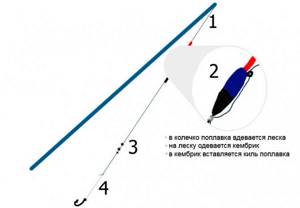
Fly tackle
A Bolognese fishing rod for long distances and line fishing should have a medium-fast action:
- length - 4–6 m;
- inertial coil - 2000–3000;
- fishing line - Ø 0.2 mm;
- leash - 25 cm, Ø 0.14 mm;
- hook - NºNº8–10.
- a weight is better - a sliding olive;
- sports float with a blind mount.
Fly fishing
You can fly fish all summer long using various insect baits: natural, artificial. Fly fishing has not gained much popularity, although it is even superior to spinning in its sportiness.
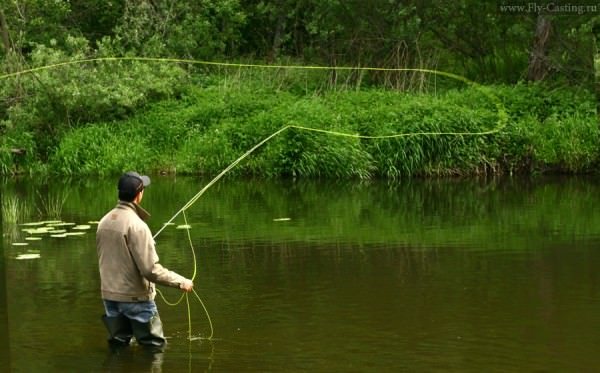
Success will depend on your skills in managing this gear. For a successful hunt, you will need repeated training in accuracy and casting range.
The essence of this method is the ability to silently cast bait, accurately and frequently: closer to snags, algae, fallen trees, etc.
Bottom fishing rod
It has always occupied a leading position, probably because it is a catchable and inexpensive tackle. Any fisherman can easily cope with its collection, also:
- The bite is easy to spot.
- The fish is constantly fed and therefore rarely moves to another place.
- You can hunt at different depths and currents.
- Making long casts is not a problem, even up to 120 m.
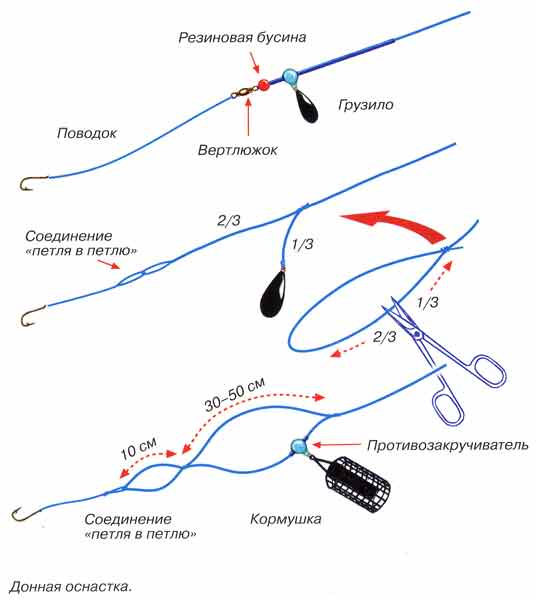
A good option for a bottom fishing rod is a fiberglass telescopic spinning rod:
- for a standing reservoir - 2–2.5 m, test 30–60 g;
- for large rivers with intense currents, length - 2.5–3 m, test up to 100 g or more.
The bottom fishing rod should consist of:
- inertia-free reel with friction brake - 2500–4000;
- presence of a baitrunner;
- fishing line - Ø 0.28–0.35 mm;
- the shape of the feeder will depend on the location;
- hook - No. 6–8;
- bite alarm;
- stand.
You can equip the donk with various equipment: inline, helicopter, anti-twist tube, sliding feeder, etc.
For spinning
Catching is difficult, but exciting. You will need a spinning rod:
- medium build;
- length 2.3–2.8 m;
- test from 5–16 years;
- coil 2000–2500;
- monofilament line, but you can also use braided line Ø 0.3–0.27 mm.
For bait you will need: small spoons (00–2) of bright colors, heavy but narrow. The bait needs to be submerged a little, it should go at half-water. In autumn you need to use larger wobblers and spinners.
On the jig
Ide is especially well caught with a jig in the winter and spring, but only with a good current. Conical winter feeders or standard fishing rods are used, and heavy baits are attached to the main fishing line. One should preferably be black, the other tungsten.
The ide most often grabs the top nozzle. The jig is separated from the bottom, and it begins to slowly fall down again. It is during descents and ascents that the most bites occur:
- large individuals prefer reelless jigs;
- small ones - jigs with maggots and bloodworms.
A good duo for winter tackle is a combination of a jig and a donkey:
- At the end of the fishing line, a feeder feeder is attached (bait is added) or a sinker;
- a little higher, tie a leash with a jig
The most popular bait is a green or black ant. It is good to hook on: mayfly, caddisfly.
Fishing in the “wiring”
Float tackle is used.
The essence of the method: the nozzle is thrown a little upstream, after which it is carried along the reservoir with the fishing line splashed down. The flock must pay attention to the bait; you need to play with the float, holding it and then releasing it. Initially, it is necessary to explore the depth and determine the nature of the bottom.
The most optimal places are a snarled bottom, areas of water with eddies, and steep banks. The place is chosen in advance to place the bait there. The rod can be taken without a reel if fishing will be carried out in a slow current.

Fishing in line from a boat
But if with the flow, then you will need:
- inertial coil;
- fishing line - Ø 0.3 mm;
- test - up to 5–7 kg;
- leash - 30 cm, smallest diameter.
When the bottom is too dirty, then the bait is placed not along the bottom, but 5–7 cm above the water level. The float must be in a vertical position. When fishing from a boat, the feeder with bait is moved to the side, at a distance of up to 4 m. Only the float should not be in this place.
When an ide takes the bait, it drowns the float along with it. When it is hooked, do not rush to retrieve it; move it a little so that it spends all its strength and it is easier to take it into the landing net.
Using networks
A net is used to block off the chosen area of the reservoir. In order to know the installation location, the fisherman must first find out:
- about the characteristics of the reservoir;
- the route of at least the expected passage of a school of fish;
- water flow speed and direction;
- bottom relief.
Bait for fish ide
The choice of one or another spinning bait depends on the fishing season. In the spring, for example, Minnow wobblers performed well. They are used more often when fishing near bridges or supports. The wobbler will slowly swim with the flow, imitating a tired or sick fish. Such fry are often attacked by ide.
In summer it is better to use spinners: small spinners. Such baits have stripes or dots on the petal. Willingly takes ide on Blue Fox with red dots on a black background and yellow inner surface of the petal. These lures are size 4, while other lures are no larger than size 2.
They also catch ide with success using spoons. These are small and rather narrow baits. They are used for slow flows. For medium and fast currents it is better to use kasmasters.
When fishing with spinners, it is better to use monofilament fishing line with a diameter of 0.18 - 0.2 mm. The spoon should swim slowly. It is the slow retrieve that provokes the ide to bite. Make the retrieve a little faster, and the ide will ignore the bait.
A metal leash is used for catching ide. You can also use a retractable leash. The picture shows a bait with silicone bait:
This is a combined bait, which also includes a pear-shaped weight. The length of the leash can vary from 20 to 120 cm. The length of the leash with a weight is from 20 to 25 cm. It is better to use a leash made of fluorocarbon with a thickness of 0.14 - 0.18 mm. As for the weight of the weight, there is one caveat. In some situations, it is better to place a weight so that it is carried away a little by the current. It turns out that the bait moves, but in pauses, as if freezing. Such a leisurely pace suits the ide quite well, and he swallows the bait without hesitation.
In normal situations, it is better to place a weight of such weight that it will not be carried away. A twister or other silicone will spin around it and attract fish. You can put bloodworms, worms and maggots on the hooks, because ide is still a carp fish and loves to eat animal baits.
Bait for ide: recipes
The ide cannot collect food from the bottom because its mouth is not designed for this. It only grabs it in the water column, or at least 7–15 cm from the bottom. Therefore, the bait should be loose.
Recipe No. 1
- breadcrumbs 0.5 kg;
- bran, any 200–400 g;
- semolina 100–200 g;
- sunflower seeds (roasted and twisted) 300 gr.;
- maggots, arbitrary quantity;
- oat flakes 100 gr.
Mix everything well, you can add any aromatic additive.
Recipe No. 2
- take 1 kg of peas and steam;
- 200 gr. flax seeds, fry and grind in a coffee grinder;
- Dry 1 kg of bran in a frying pan;
- rye malt 300 ml.;
- semolina 200 gr.;
- food for aquarium fish 50 g;
- It is advisable to chop the cockchafer, maggots, and worms;
- some clay.
Mix everything and let it sit for 2-3 hours.
Recipe No. 3
- steam 3 kg of wheat;
- oatmeal 400–500 gr.;
- sunflower cake 1 kg;
- ground crackers, check consistency;
- dry or fresh mint 2 tbsp. l.;
- bloodworms, maggots, as much as you can put in;
- dry blood and clay.
What does ide love?
The mixture may include components of plant and animal origin. Almost every composition includes sunflower processing products - sunflower seeds or cake. Groundbait for ide is prepared from:
- Peas;
- Hercules;
- Bran;
- Breadcrumbs;
- Malt;
- Flax seed;
- Monkey;
- Tolokna;
- Powdered milk or cream;
- Bloodworm;
- Worm;
- Maggot.
It is important not only what ingredients to use and in what proportions, but also the method of feeding the bait. Often it is during the current that balls provide good results. To form them, local soil is added to the mixture.
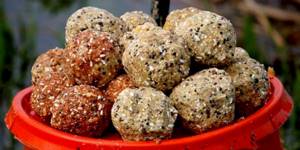
The clay holds the shape of a ball for a long time and the food is washed out gradually. Loose bait will simply be carried away by the current. Even if the current is weak, then the small stuff will be the first choice for the scattering, but if you are specifically targeting ide, you are unlikely to need it. Roach and bream are very often caught in the bycatch; the probability of catching this fish is especially high at the very beginning of June.
When catching ide, you need a lot of bait; it must contain large particles. Pastoncino colored crackers have proven themselves very well. For ide, they add a little, and they are needed in order to attract large fish.
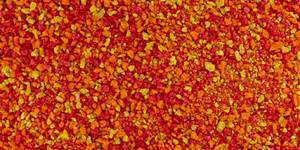
You can make colored crackers yourself. To do this you will need any flour, red or yellow food coloring and flavoring. Knead the colored dough, roll it into a thin layer and dry. This can be done either in the oven or outside under a canopy. The result will be a cake similar to dry lavash. You can grind it with a rolling pin through a newspaper or in any other convenient way, for example, through a meat grinder without knives. Branded pastoncino have a fluorescent effect, that is, they glow in the darkness of the river depths. Colored crackers are good because they attract fish, and it is difficult to overfeed them.
The best baits and lures
Lures
- For winter: vertical spinners, mayflies, bloodworms, bark beetles, flies.
- In spring: spinners, frogs, caddis, worms.
- In summer: beetles, dragonflies, black leech, bait fish, amphipods, flies.
- In autumn: maggots, dragonfly larvae, steamed pearl barley and peas, maggots.
Artificial: flies, jigs, wobblers, poppers, micro-spinners. But the most successful baits are spoons and wobblers.
Spoon
Rotating ones are the most popular and versatile. If you need to lower the bait to the desired depth, spinners with a heavy core are used. Acceptable: Nº0–2, weight 6–10 g.
Oscillating spoons also deserve attention, especially small ones, up to 10 grams are especially catchy: Wob-L-Rite, Kastmaster, Trehgranka.
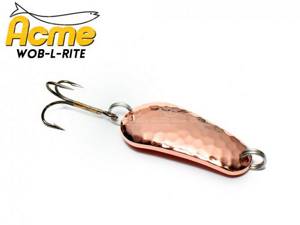
ACME Wob-L-Rite
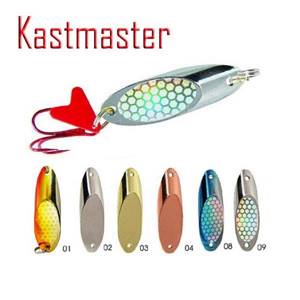
Kastmaster
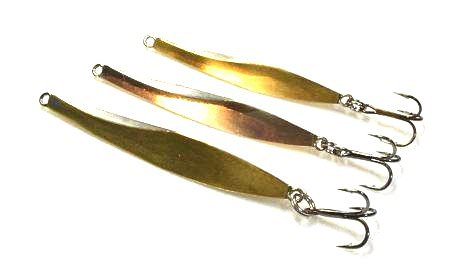
Triple edges
Wobblers
Wobblers are especially good at night, because they float well in the water and are almost impossible to get caught on.
Hunting with it just doesn’t require any special skills. You just need to quietly get close to the fishing spot and throw the bait, and then slowly move it, making small stops. The main thing is to initially choose the right position:
- Fishing from the bank - walk upstream to the place opposite from the ide and let the bait go downstream. But only so that during the retrieve it is closer to the place where the fish is supposed to come out.
- From a boat - also position it upstream, where circles spreading out across the water will be visible. The bait is thrown downstream towards the feeding fish.
The bite with a wobbler is even better than with a spinner because the wobbler immediately catches on the tee, and the spinner is more susceptible to ide attacks. With a wobbler the bite is more powerful, the ide almost always hooks itself.
Fishing is also easy due to the shock-absorbing rod and monofilament line.
Catching ide with a spinning rod video
Spinning on ide video
“BF”-No. 10. Catching ide with wobblers.
Catching ide video
Ide can be purposefully caught using spoons, despite the fact that ide is considered a peaceful fish. Spinning ide fishing is quite an exciting activity. Small spinners are most suitable for catching ide. But recently, spinning anglers have been successfully catching ide using oscillating spoons.
Fishing technique and tactics
- Ideal weather is cloudy and the wind direction is southwest. At dawn there is always an intense bite. It is necessary to immediately identify several of the most promising places. We start feeding and adjust the tackle along the way.
- The hook should extend 5–10 cm from the bottom. And the float should be 1 meter from the butt, with the tip cocked up. We conduct the wiring two meters, no more from the boat, and hold the end of the fishing line suspended so that it does not fall into the water. The cutting must be sharp so that the ide does not escape.
- When all the line is gone, the float should be in a vertical position. Next, we pull it up and start all over again. If within 20–30 minutes there are no more bites, or they are extremely rare, you need to change the place.
Hunting and subsequent fight with this mighty fish will bring an unforgettable experience. In fact, this is why they go fishing. And if you choose a suitable place, then you can safely count on a stable catch throughout the season. No tail, no scales!
How to properly feed ide?
To begin with, you should carry out starter feeding, while in most cases other fish, roaches, and bream will be the first to approach the fishing site. You should use bait of a larger nature, which is too tough for these fish. It’s better to wait a little and enjoy catching ide.
It is worth remembering the fact that the ide does not like to stand for a long time in one place of the reservoir, in the case when the bait lures the ide, it will come up, try the offered food and then again go to another area, after some time the ide will again swim to the baited place, and so on all the time.
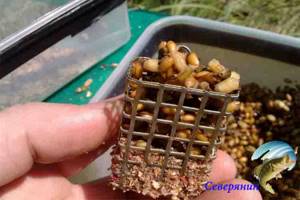
You should add a little pond soil to the ide bait, so the bait itself becomes a little heavier, this is especially useful when fishing for ide on currents. In some cases, fishermen do the following - stuff a fine mesh net with breadcrumbs, with the addition of ground peas, lower the net into the pond from a boat and fish around from the boat. In the summer, you can flavor ulcer bait with fruity aromas of a sweet nature.
